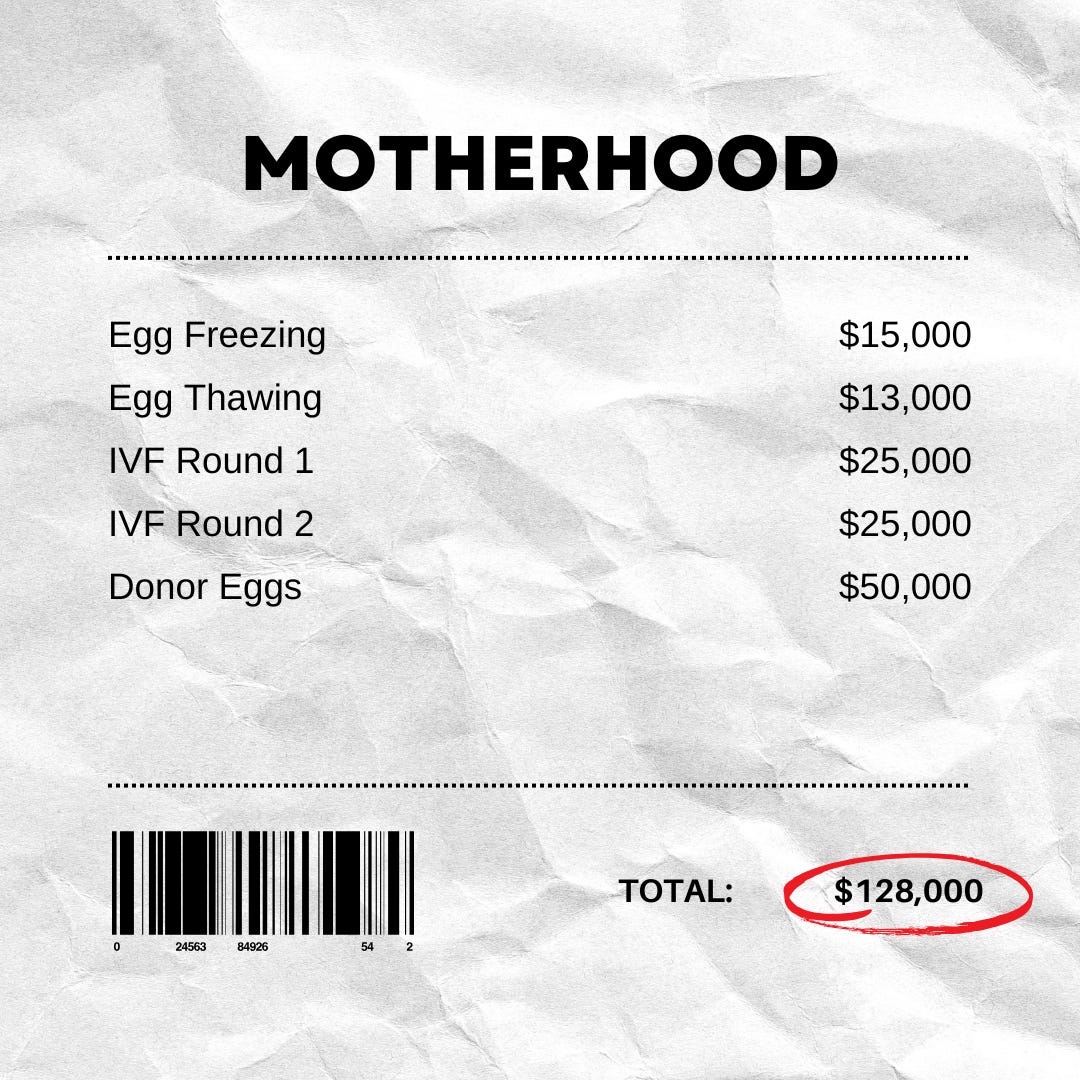Motherhood Costs Money.
There were a few distinct “threads” in my book that I wanted to be sure to discuss when pitching excerpts/essays and doing press. One of them is the “Fertility Wealth Gap.”
In my book, I speak candidly and directly about the financial cost of having a kid. There were multiple rounds of IVF followed by our decision to use donor eggs, and each of these steps along the way carried a five-figure price tag. I’m a writer and my husband is a musician—we’re not made of money, but we made it work.
I wrote an essay for WSJ that talks about the facts and figures: “Freezing, Storing and Thawing My Eggs Cost Me $33,179. I Still Didn’t End Up With a Baby.”
Before I even met my husband, I paid $15,000 to freeze my eggs at age 35.
In early 2025, Bankrate.com reported that 40% of Americans could not cover a $1,000 emergency expense with cash or savings. It’s safe to say that far fewer could afford to pay $15,000 for egg freezing, let alone the storage and thawing costs associated with the process.
What’s more, women are often undergoing this process before they meet their partner (if they ever do) and shouldering the full cost alone despite a wage gap that already favors men. I thought my health insurance might cover egg freezing or IVF, but it didn’t.
Does this piss you off? It should!
Thawing my eggs cost $13,000, and my eggs were not viable.
Two rounds of IVF cost $25,000 each.
Using donor eggs cost $50,000.
I had money from selling an apartment I bought at a very opportune time, as well as an advance for a book that never came to fruition (long story - not my fault!), but this process depleted most of it. People who don’t have this reserve of cash might take out loans, withdraw from their 401k or do any number of financially risky things to become a parent.
On financial journalist and educator Farnoosh Torabi’s So Money podcast, I talked about the financial reality of fertility and my own story. You can listen to the full interview here:
So, Was It Worth It?
I could have put the money into a mutual fund for my retirement or gone on lavish vacations or saved it for a rainy day or done any number of fun things. The problem is that the cost of preserving our fertility (which is exorbitant!) is falling on women alone most of the time—AND leaves out most of the population. Not to mention that fertility science still has a long way to go. There’s no guarantee that even after spending over $100K (or more!) that a baby will be waiting on the other side.
My point isn’t that having our daughter Clementine wasn’t worth the six-figure price tag. My belief is that EVERYONE should be able to become a parent if they so desire, without a whopping price tag that puts them in a vulnerable place financially and emotionally. In the meantime, sharing our stories of costs and financing helps to inform other women, especially young women, about their options and how to prepare for their futures. I hope that in being so open about my own financial path to fertility, I am able to, at the very least, raise awareness of an overlooked but vital expense mostly shouldered by women in their 20s and 30s.
XO,
Ruthie








Priceless advice, Ruthie! We are a nation of such extremes. We so often cannot terminate unwanted pregnancies or achieve much wanted pregnancies without great personal cost in this country. I know it’s not the same issue, but it’s hard not to see these things as politically, historically relevant right now.
This invoice is 💯 (and 100 percent sucky!)